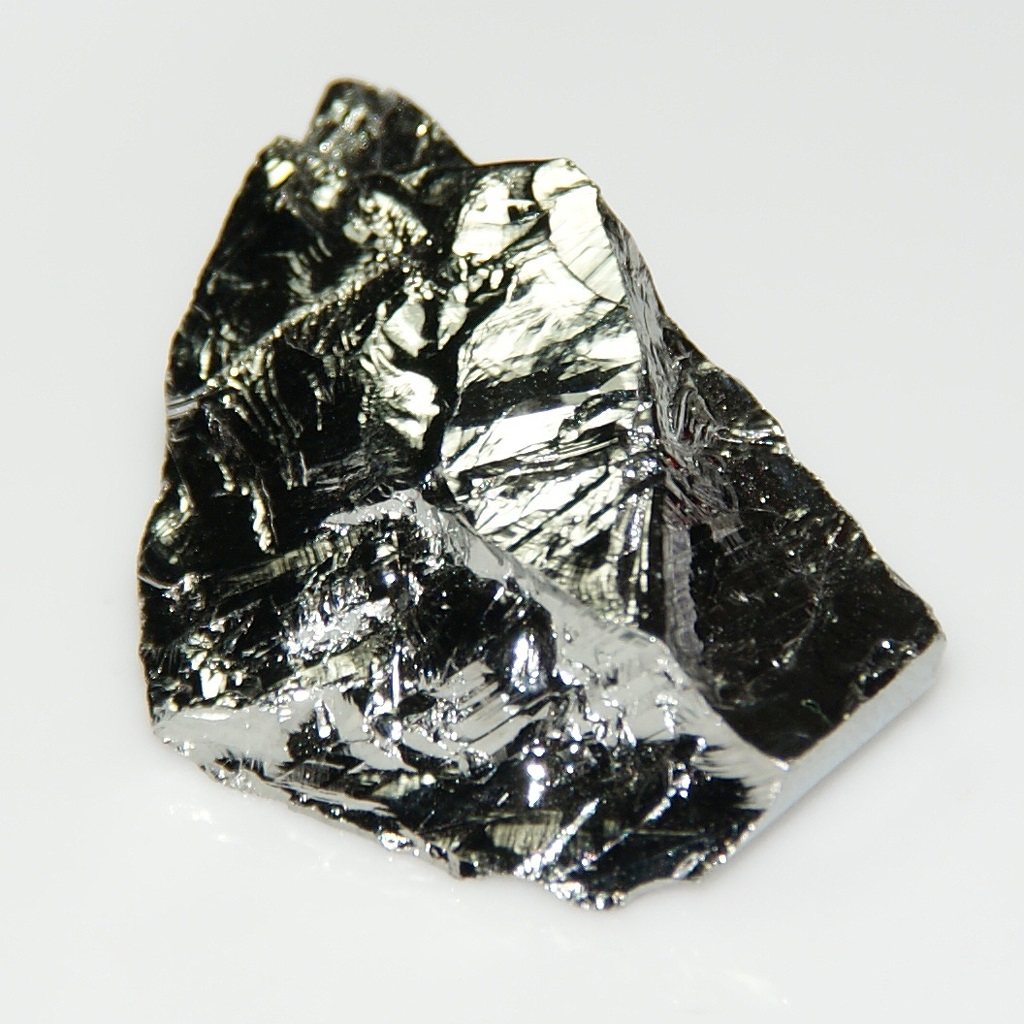Germanium
32
Ge
Grupp
14
Period
4
Block
p
Protoner
Elektroner
Neutroner
32
32
41
Generella Egenskaper
Atomnummer
32
Atommassa
72,63
Masstal
73
Kategori
Metalloid
Färg
Grå
Radioaktiv
Nej
From the Latin word Germania, Germany
Kristallstruktur
Ytcentrerat kubiskt
Historia
In 1869, Dmitri Mendeleev predicted its existence and some of its properties based on its position on his periodic table and called the element eka-silicon.
In 1886, Clemens Winkler found the new element along with silver and sulfur, in a rare mineral called argyrodite.
The first silicon-germanium alloys were obtained in 1955.
In 1886, Clemens Winkler found the new element along with silver and sulfur, in a rare mineral called argyrodite.
The first silicon-germanium alloys were obtained in 1955.
Elektroner per skal
2, 8, 18, 4
Elektronkonfiguration
[Ar] 3d10 4s2 4p2
Germanium and the oxide are transparent to infrared radiation
Fysikaliska Egenskaper
Aggregationstillstånd
Fast
Densitet
5,323 g/cm3
Smältpunkt
1211,4 K | 938,25 °C | 1720,85 °F
Kokpunkt
3106,15 K | 2833 °C | 5131,4 °F
Smältvärme
31,8 kJ/mol
Ångbildningsvärme
334 kJ/mol
Specifik värmekapacitet
0,32 J/g·K
Förekomst i jordskorpan
0,00014%
Förekomst i universum
0,00002%

CAS-nummer
7440-56-4
PubChem CID-nummer
6326954
Atomära Egenskaper
Atomradie
122 pm
Kovalent radie
122 pm
Elektronegativitet
2,01 (Paulingskalan)
Jonisationspotential
7,8994 eV
Molvolym
13,6 cm3/mol
Värmeledningsförmåga
0,599 W/cm·K
Oxidationstillstånd
-4, 1, 2, 3, 4
Användningsområden
The most common use of germanium is as a semiconductor in electronics.
Germanium is used in transistors and in integrated circuits.
It is used as an alloying agent and as a catalyst.
It is also used in infrared spectroscopes and infrared detectors.
Germanium is used in transistors and in integrated circuits.
It is used as an alloying agent and as a catalyst.
It is also used in infrared spectroscopes and infrared detectors.
Germanium is not known to be toxic
Isotoper
Stabila isotoper
70Ge, 72Ge, 73Ge, 74GeInstabila isotoper
58Ge, 59Ge, 60Ge, 61Ge, 62Ge, 63Ge, 64Ge, 65Ge, 66Ge, 67Ge, 68Ge, 69Ge, 71Ge, 75Ge, 76Ge, 77Ge, 78Ge, 79Ge, 80Ge, 81Ge, 82Ge, 83Ge, 84Ge, 85Ge, 86Ge, 87Ge, 88Ge, 89Ge